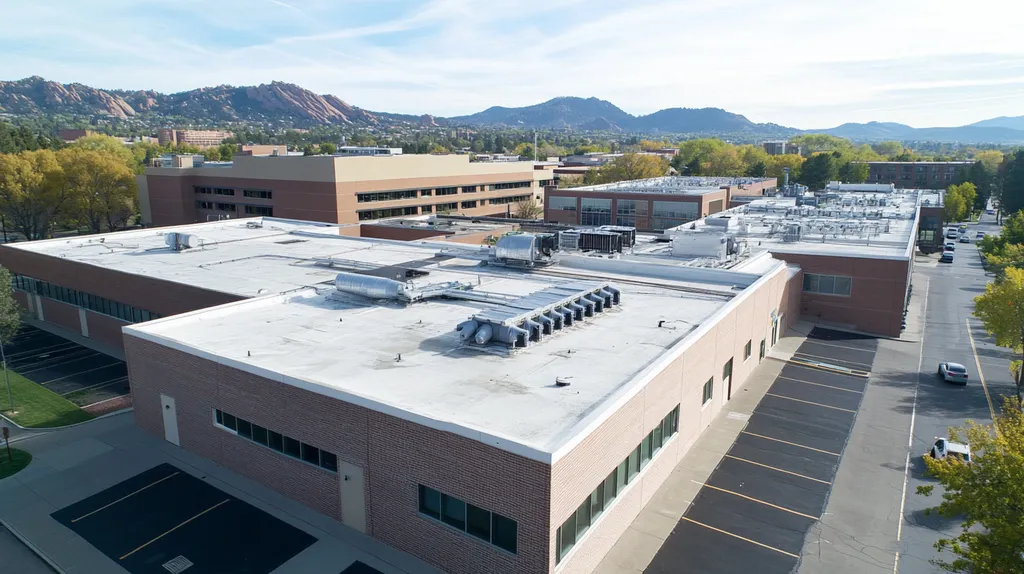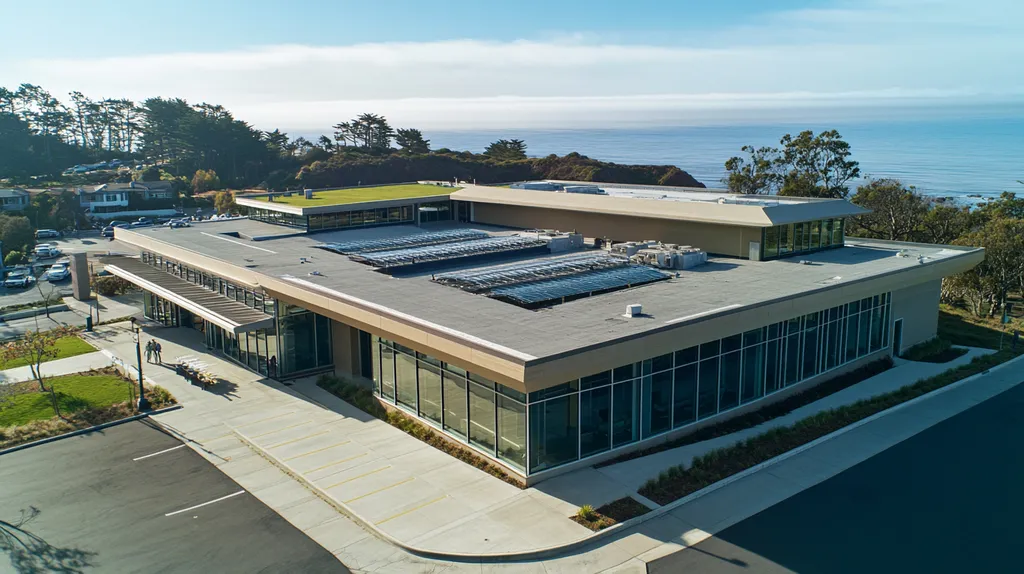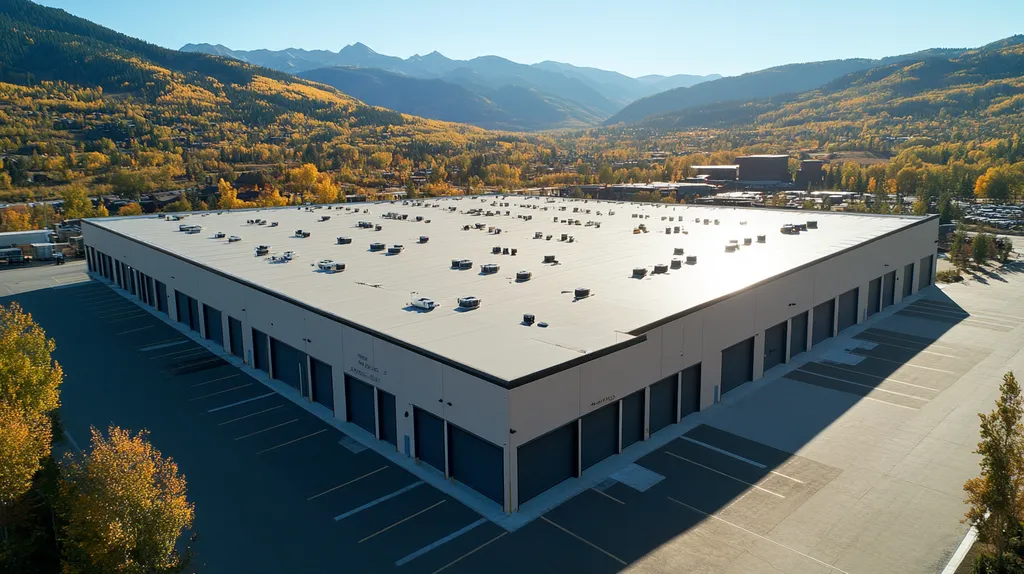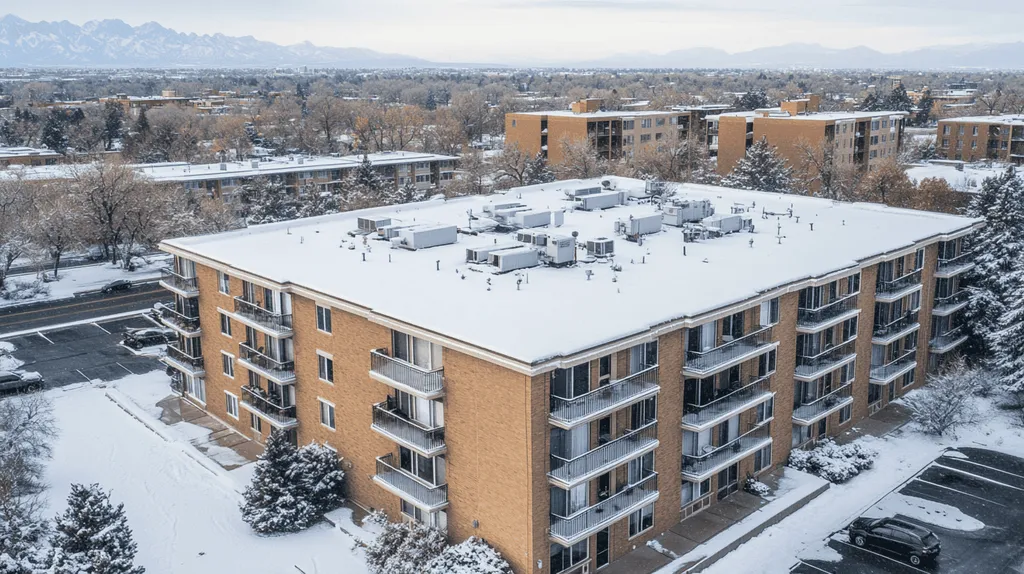In industrial environments, scaffolding-related incidents account for nearly 25% of all construction fatalities, with improper setup and non-compliant systems representing the leading causes. For facility managers and property owners, understanding compliant scaffolding requirements isn’t merely about regulatory adherence—it’s about preventing catastrophic accidents and protecting valuable assets.
Current OSHA data indicates that scaffolding violations consistently rank among the top 10 most frequently cited workplace safety infractions, resulting in millions of dollars in fines annually.
This comprehensive guide examines the critical factors of compliant scaffolding systems, from essential safety requirements to practical implementation strategies that protect both workers and industrial facilities.
SECTION 1: THE BASICS EXPLAINED
In industrial roofing applications, proper scaffolding compliance represents the critical difference between safety and catastrophe. Each year, approximately 4,500 injuries and more than 60 fatalities occur due to scaffolding-related incidents in the construction industry. Understanding and implementing compliant scaffolding systems isn’t just about following regulations—it’s about protecting workers, preserving property value, and maintaining operational continuity.
What It Is (In Plain Language)
Compliant scaffolding consists of engineered temporary structures that provide stable elevated platforms for roofing work. These systems incorporate specific safety features including guardrails, midrails, and toeboards as mandated by safety regulations.
The scaffolding must meet strict engineering requirements for load capacity, stability, and structural integrity. Each component undergoes rigorous testing and certification to ensure it can withstand the demands of industrial roofing applications.
A compliant system includes proper fall protection measures at heights of 10 feet or greater. Workers on adjustable suspension scaffolds must utilize both personal fall arrest systems and guardrail protection to ensure maximum safety. (source: EDGE Fall Protection)
Why It Matters (To Your Building)
Proper scaffolding compliance directly impacts maintenance quality and building preservation. When workers can safely access all areas of the roof, they perform more thorough inspections and repairs, extending the roof’s operational lifespan.
Non-compliant scaffolding creates liability exposure through potential worker injuries, property damage, and regulatory violations. These incidents can result in substantial financial penalties, increased insurance premiums, and project delays.
Compliant scaffolding systems enable more efficient work execution, reducing project timelines and minimizing disruption to building operations. This efficiency translates to cost savings and better preservation of the building envelope.
Regular access to roof areas through proper scaffolding allows for preventive maintenance, helping identify and address potential issues before they become major problems.
How It Works
Compliant scaffolding implementation begins with a detailed site assessment considering roof configuration, access points, and load requirements. This evaluation determines the appropriate scaffolding type and configuration for the specific application.
Professional engineers design the scaffolding layout to ensure structural stability and proper load distribution. The design accounts for factors like wind loads, material storage needs, and worker movement patterns.
Installation follows a precise sequence of assembly and inspection protocols. Qualified personnel verify each component’s integrity and proper connection before authorizing use.
Regular inspections throughout the project verify continued compliance and structural integrity. These checks include examining connection points, safety features, and support mechanisms to maintain optimal performance.
The system requires ongoing maintenance and documentation of all safety procedures, inspections, and modifications. This documentation creates an audit trail demonstrating due diligence in maintaining safety standards.
SECTION 2: PRACTICAL APPLICATIONS
Industrial roofing operations demand precise safety protocols, with scaffolding compliance at the forefront of risk management. Recent data shows that falls from heights remain the leading cause of fatalities in construction, with improper scaffolding contributing significantly to these incidents. Understanding and implementing proper scaffolding applications not only protects workers but also ensures project efficiency and regulatory compliance while safeguarding valuable industrial assets.
Common Uses & Examples
Industrial roofing applications require scaffolding systems for various critical tasks, from routine maintenance to complete roof replacements. These systems provide stable platforms for workers to access difficult areas while maintaining proper safety distances from roof edges.
Large-scale industrial facilities frequently utilize scaffolding for comprehensive roof membrane installations. These projects demand extensive worker access across wide roof areas, making proper scaffolding essential for both safety and efficiency.
Equipment installation and maintenance operations benefit particularly from properly configured scaffolding systems. These structures enable safe access to rooftop HVAC units, solar installations, and other mechanical systems requiring regular service.
Emergency repairs after severe weather events necessitate rapid but safe access to damaged areas. Compliant scaffolding ensures workers can quickly address issues while maintaining required safety standards.
When You Need It Most
Major roof renovations and replacements represent critical periods when proper scaffolding becomes essential. These projects often span multiple weeks and require continuous safe access to large roof sections.
Preventive maintenance programs demand regular roof access throughout the year. Scaffolding systems facilitate these scheduled inspections and repairs, helping prevent minor issues from escalating into major problems.
Fall protection requirements intensify when working at heights of 10 feet or greater, making compliant scaffolding mandatory. Workers on adjustable suspension scaffolds must utilize both personal fall arrest systems and guardrail protection to ensure maximum safety. (source: EDGE Fall Protection)
Seasonal transitions, particularly before winter weather arrives, create urgent needs for proper scaffolding. These systems enable safe completion of weatherization tasks and installation of protective measures.
Interactions With Other Systems
Scaffolding systems must integrate seamlessly with existing fall protection infrastructure. This coordination ensures multiple layers of safety while maintaining accessibility to work areas.
Building envelope maintenance requires careful consideration of how scaffolding interfaces with architectural elements. Proper placement prevents damage to building components while providing necessary access points.
Material handling systems often operate in conjunction with scaffolding setups. This interaction demands careful planning to maintain safe working loads and proper clearances.
Emergency response protocols must account for scaffolding configurations. Access routes and evacuation plans require updates to reflect temporary structures while maintaining compliance with safety regulations.
SECTION 3: KEY TERMINOLOGY DECODED
Misunderstanding scaffolding terminology creates dangerous gaps in safety compliance and execution. With scaffolding-related incidents causing thousands of injuries annually, precise comprehension of technical terms becomes a critical risk management factor. Clear communication between facility managers, contractors, and workers requires mastery of industry-specific language that directly impacts project safety, scheduling, and regulatory compliance.
Essential Terms Explained
Scaffolding components must be properly identified and understood to ensure safe assembly and use. Base plates, standards, ledgers, and transoms form the fundamental structure, with each element serving specific load-bearing and stabilization functions.
Scaffold grades indicate load-bearing capabilities and appropriate applications. Light-duty scaffolds support up to 25 pounds per square foot, while heavy-duty systems accommodate loads exceeding 75 pounds per square foot.
Scaffolding safety incorporates dedicated planning, building, inspection, and usage protocols to maintain compliance. A competent person must supervise all scaffold erection, moving, dismantling, and alterations to ensure adherence to safety standards. (source: EDGE Fall Protection)
Access zones define permitted entry and exit points, requiring clear marking and maintenance. These designated areas prevent unauthorized access while ensuring proper emergency evacuation routes remain accessible.
Industry Jargon Translated
Drop-deck configurations refer to offset platform heights used to accommodate building features or work requirements. This arrangement requires additional bracing and tie-in points to maintain structural integrity.
Putlogs and needles describe horizontal support members that transfer loads between scaffold components. Their proper specification and installation directly impact system stability and load distribution.
Tie-in patterns specify the frequency and placement of connections between scaffolding and the building structure. These critical attachment points prevent lateral movement and ensure overall system stability.
Working lifts denote individual platform levels where tasks are performed. Each lift must meet specific safety requirements including proper guardrails, toe boards, and access points.
Measurement & Units Simplified
Load ratings express maximum safe working loads in pounds per square foot (PSF). Understanding these ratings prevents dangerous overloading situations that could compromise structural integrity.
Bay spacing measurements determine the horizontal distance between vertical supports. Standard configurations typically range from 5 to 7 feet to optimize stability and material efficiency.
Height-to-base ratios calculate stability factors for freestanding scaffold structures. The standard 4:1 ratio means the height should not exceed four times the minimum base dimension without additional stabilization.
Platform width requirements specify minimum clear distances for safe worker movement. Standard specifications mandate at least 18 inches of clear platform width, with wider requirements for certain applications.
SECTION 4: DECISION FACTORS
Selecting appropriate scaffolding for industrial roofing applications represents a complex decision with far-reaching safety and financial implications. Recent industry data shows that scaffolding-related incidents account for nearly 25% of all construction fatalities, making proper selection critical. Property owners must navigate strict regulatory requirements while balancing cost considerations, performance capabilities, and long-term durability to ensure both worker safety and project success.
Cost Considerations
Initial scaffolding investments vary significantly based on system type, with compliant systems typically requiring higher upfront expenditure. However, these costs must be evaluated against potential liability exposure and regulatory penalties associated with non-compliant alternatives.
Proper scaffolding systems require comprehensive engineering assessments and regular inspections to maintain OSHA compliance. These ongoing operational expenses should be factored into total cost calculations, as they directly impact both safety outcomes and budget planning.
Sound and rigid construction requirements, along with proper load capacity specifications, demand high-quality materials and expert installation. (source: Sky Climber)
Insurance premiums often reflect scaffolding quality and compliance levels, with properly engineered systems typically qualifying for more favorable rates. This correlation creates opportunities for long-term cost savings through strategic equipment selection.
Performance Trade-offs
Load-bearing capacity represents a critical performance metric, with industrial applications often requiring systems capable of supporting substantial weight. These requirements must balance against practical considerations like assembly time and transportation logistics.
Weather resistance capabilities significantly impact system reliability, particularly in regions experiencing extreme conditions. Higher-grade materials and specialized coatings can enhance performance but may increase initial costs.
Modular designs offer flexibility for various roof configurations but may sacrifice some stability compared to custom-engineered solutions. This trade-off requires careful evaluation based on specific project requirements.
Access point configuration affects both worker efficiency and safety protocol implementation. Optimal designs maximize productivity while maintaining strict compliance with fall protection standards.
Lifespan & Durability Factors
Material selection directly influences system longevity, with premium components typically offering extended service life despite higher initial costs. Corrosion resistance and UV stability represent key factors in determining long-term durability.
Environmental exposure levels impact maintenance requirements and replacement schedules. Regular assessment protocols help identify potential degradation before it compromises structural integrity.
Storage and handling practices significantly affect equipment lifespan. Proper protocols for transportation, assembly, and dismantling help preserve component integrity and extend useful life.
Component compatibility issues can accelerate wear patterns and reduce system reliability. Standardizing equipment specifications helps maintain consistent performance levels while simplifying maintenance procedures.
SECTION 5: COMMON CHALLENGES
Industrial roofing scaffolding challenges represent a critical safety and compliance concern, with OSHA data indicating that scaffolding violations consistently rank among the top 10 most cited workplace safety infractions. These violations not only jeopardize worker safety but also expose facilities to significant liability and operational disruptions. Understanding and addressing common scaffolding challenges helps facility managers maintain safety standards while protecting valuable roofing assets.
Frequent Problems & Solutions
Structural instability remains a primary concern in industrial scaffolding applications. Regular movement and repositioning of scaffolding components can lead to loosened connections and compromised stability if not properly monitored.
Scaffolding must maintain sound and rigid construction while meeting specific load capacity requirements to ensure worker safety. OSHA standard 29 CFR 1926.451 mandates that all scaffolding components undergo thorough inspection by competent personnel during assembly, dismantling, or modification. (source: Sky Climber)
Access point congestion frequently compromises both safety and efficiency. Establishing multiple entry/exit points and implementing traffic flow patterns helps reduce bottlenecks while maintaining proper safety protocols.
Material handling issues often arise from improper loading practices or inadequate distribution planning. Implementing designated staging areas and specific material routing protocols helps prevent overloading and maintains system stability.
Warning Signs To Watch For
Visible component wear indicates potential structural compromise. Regular inspection should focus on connection points, support members, and safety features for signs of material fatigue or damage.
Unusual movement or vibration during normal operations signals potential stability issues. These conditions require immediate assessment and may necessitate temporary work stoppage until corrections are implemented.
Platform deflection beyond recommended tolerances suggests potential overloading or structural weakness. Monitoring deflection patterns helps identify developing problems before they become critical safety hazards.
Worker complaints about access difficulties or stability concerns merit immediate investigation. These reports often reveal underlying issues that might otherwise go unnoticed during routine inspections.
Preventative Approaches
Documentation systems tracking inspection schedules, maintenance activities, and modification history provide essential accountability. This documentation creates a clear record of compliance efforts while identifying potential problem patterns.
Training programs focusing on proper assembly techniques and safety protocols help prevent common installation errors. Regular skill assessments ensure workers maintain necessary competency levels.
Weather monitoring protocols establish clear guidelines for operation during adverse conditions. These protocols should specify wind speed limits, precipitation thresholds, and temperature restrictions.
Load management systems incorporating proper material staging and distribution practices prevent overloading situations. These systems should include clear marking of maximum load limits and designated storage areas.
SECTION 6: NEXT STEPS & RESOURCES
Proper scaffolding implementation represents a critical safety and compliance challenge for industrial roofing operations. With scaffolding violations consistently ranking among OSHA’s top 10 cited infractions, facility managers must carefully evaluate providers, understand regulations, and maintain current knowledge of industry standards. Taking the right steps in scaffolding selection and management directly impacts worker safety, project efficiency, and legal exposure.
Questions To Ask Providers
Begin provider evaluation by requesting detailed documentation of their safety record, insurance coverage, and worker training programs. This information establishes their commitment to maintaining compliant operations.
Examine their quality control processes and inspection protocols. Providers should demonstrate systematic approaches to equipment maintenance, component testing, and safety verification.
Request specific examples of similar industrial roofing projects they’ve supported. Their experience with comparable facilities helps validate their capability to meet your requirements.
Discuss their emergency response procedures and availability of technical support. Understanding their ability to address urgent situations helps prevent costly operational disruptions.
Verify their knowledge of current regulations and industry standards. A qualified provider stays current with evolving safety requirements and implementation guidelines.
Industry Standards & Guidelines
Compliance with regulations and standards remains paramount for roof scaffolding safety and operational efficiency. Regular inspections, proper documentation, and strict adherence to load-bearing specifications form the foundation of compliant operations. (source: Scaffold Type)
The Scaffolding, Shoring and Forming Institute (SSFI) provides comprehensive technical resources for safe scaffolding practices. Their guidelines offer detailed specifications for proper assembly, use, and maintenance.
Local building codes often contain additional requirements beyond federal regulations. Understanding these jurisdiction-specific standards helps prevent compliance gaps.
Industry associations regularly update best practice recommendations based on incident data and emerging technologies. Following these guidelines helps maintain optimal safety protocols.
Further Learning Simplified
Professional certification programs provide structured pathways for understanding scaffolding requirements. These programs typically cover both theoretical knowledge and practical applications.
Technical bulletins from manufacturers and industry organizations offer detailed guidance on specific scaffolding applications. These resources help address unique challenges in industrial settings.
Online training modules allow facility managers to maintain current knowledge while accommodating operational schedules. These resources typically include assessment tools to verify comprehension.
Industry conferences and workshops provide opportunities to examine new technologies and methods. These events facilitate direct interaction with equipment manufacturers and safety experts.
The Bottom Line
With scaffolding-related incidents accounting for 25% of construction fatalities and millions in annual OSHA fines, proper compliance represents a critical safety and financial imperative for industrial facilities.
The implementation of compliant scaffolding systems requires careful attention to engineering specifications, regular inspections, and thorough documentation protocols.
Success depends on selecting qualified providers, maintaining strict adherence to load ratings, and establishing comprehensive training programs for all personnel involved in scaffolding operations.
As regulatory requirements continue to evolve, facility managers must stay current with industry standards while implementing systematic approaches to scaffolding safety and maintenance.
The cost of non-compliance – in both human and financial terms – makes proper scaffolding implementation an essential investment in operational sustainability.
FREQUENTLY ASKED QUESTIONS
Q. What is compliant scaffolding for commercial roofs?
A. Compliant scaffolding is an engineered temporary structure designed for safe elevated access. It includes necessary safety features such as guardrails and is tested for stability and load-bearing capacity to meet regulatory standards.
Q. How is compliant scaffolding used on industrial roofs?
A. Compliant scaffolding is essential for various tasks including maintenance and roof replacements on industrial roofs. It provides stable, safe platforms for workers, ensuring proper access while maintaining necessary safety distances.
Q. What key terms should I know about scaffolding for industrial roofs?
A. Familiarity with terms such as base plates, scaffolding grades, and access zones is critical. Understanding these definitions ensures proper assembly, effective communication, and adherence to safety protocols.
Q. What factors influence scaffolding selection for commercial roofs?
A. When selecting scaffolding, consider factors like cost, load capacity, material durability, and project specifics. Balancing these aspects helps ensure safety, compliance, and overall project efficiency.
Q. What common challenges arise with scaffolding on industrial roofs?
A. Common challenges include structural instability, access congestion, and material handling issues. Addressing these problems proactively can enhance safety, compliance, and operational efficiency on roofing projects.
Q. What next steps should I take for compliant scaffolding?
A. Evaluate scaffolding providers by reviewing safety records, training programs, and quality control procedures. Understanding current regulations and industry standards is also essential to ensure compliance and safety.
Q. How can I ensure ongoing safety with scaffolding on commercial roofs?
A. To ensure ongoing safety, conduct regular inspections, maintain thorough documentation, and implement continuous training programs. These practices help address wear and tear, ensuring scaffolding remains compliant and safe for use.











